Yves Saint Laurent and Japan
The couturier, known for being a collector of Japanese art, constantly drew inspiration from the country following his first visit in 1963.
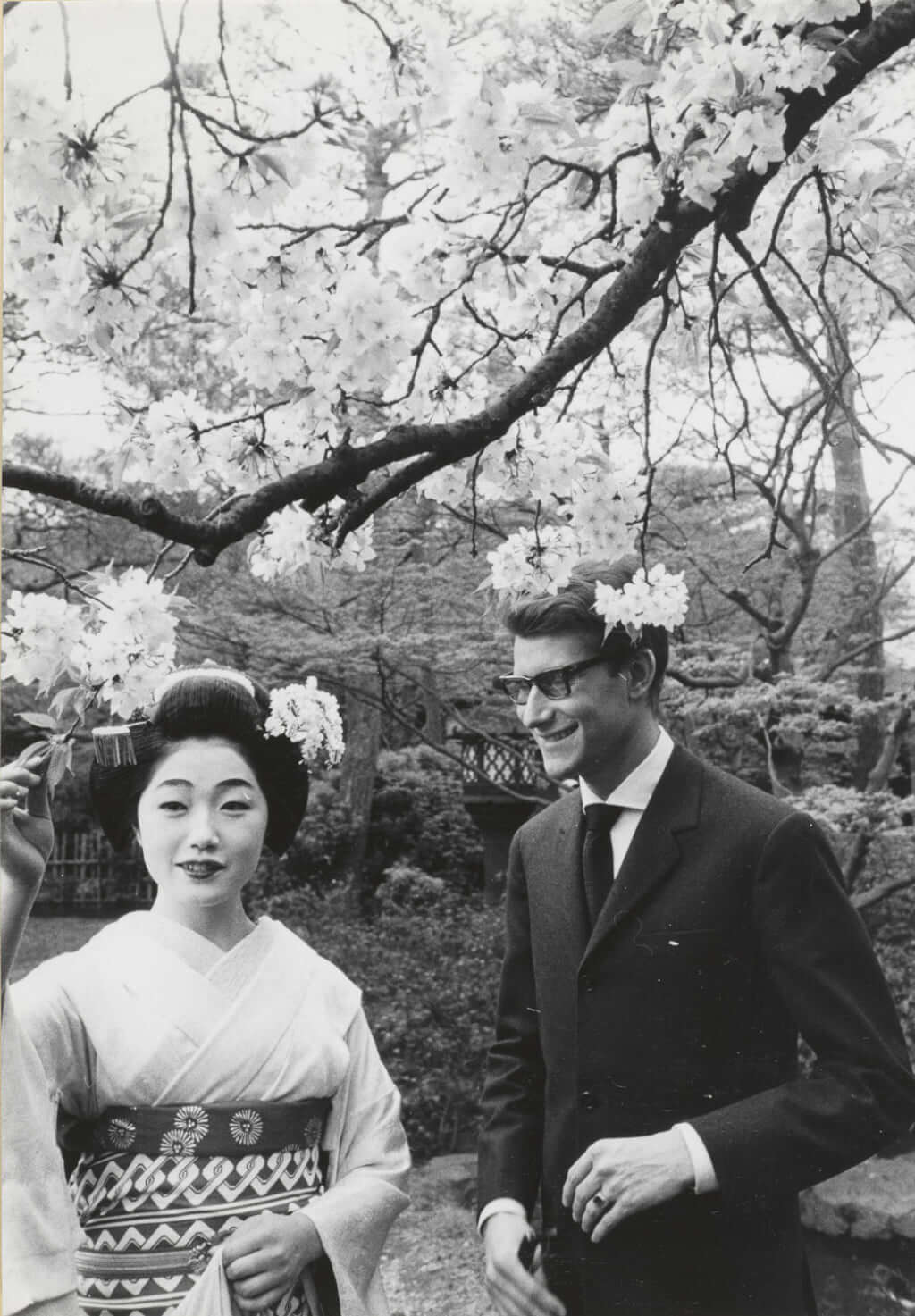
Yves Saint Laurent with a courtesan, Kyoto, April 1963 © Rights reserved
In 1963, less than two years after the opening of his eponymous fashion house, French designer Yves Saint Laurent discovered Japan. He travelled there with Pierre Berger to present his spring/summer collection with the assistance of Hiroshi Kawazoe, a friend of Pierre Berger and a sales representative for the brand in Japan. While there, he visited Tokyo, Kyoto, and Nara. The designer was immersed in Japanese culture, although he was already acquainted with it: Yves Saint Laurent collected Japanese objects, particularly boxes and furniture made from lacquer and ceramics. He also acquired various books on the subject of this civilisation, especially its engravings.
‘I sought out Japan early on and was immediately fascinated by this ancient and modern country, and ever since I have been influenced by it on many occasions’, Yves Saint Laurent explained in 1990. ‘Others before me knew that admiration: Monet, Van Gogh and all the art deco artists who were so important in our time. Today, Japan continues to grow and has managed the miracle supreme of celebrating the marriage of past and present.‘
Here, he referred to Japonisme, the French and then European artistic movement that saw the leading names in the arts, and particularly in painting, draw inspiration from Japan in their work. Yves Saint Laurent continued this trend, notably by reinterpreting the iris flowers often found in engravings on a jacket. Hokusai had featured them in Iris Flowers and Grasshopper, which provided Van Gogh with inspiration for his piece Irises (1889). The fashion designer used the same theme on a jacket adorned with embroidered irises in 1988.
Japan on fabric
‘Yves Saint Laurent often borrowed ideas from Asia and I think he was particularly fond of Japan. He was certainly a person who had a special understanding of both the aesthetics and the iconography of Japanese culture’, declared couturier Kenzo Takada in a conference dedicated to Yves Saint Laurent and his connections with Japan. From the 1970s onwards, Yves Saint Laurent’s creations displayed elements borrowed from Japanese culture: some of his dresses were embroidered with cherry blossoms, wisteria, and reeds, and his autumn/winter 1994 collection paid homage to kimono, which he reinvented as ceremonial coats to be worn over a dress, liberating them from the boundaries of Japanese interiors.
In 1990, the Sezon Museum of Art in Tokyo held a retrospective of his work, a first for a designer who was still alive at the time. Then, in 2018, the Musée Yves Saint Laurent dedicated an exhibition to the designer’s love for Asia, Yves Saint Laurent: Dreams of the Orient, bringing together the couturier’s creations and Asian works of art loaned by the Guimet Museum.
Yves Saint Laurent: Dreams of the Orient (2019), an exhibition of creations by the designer, was held by the Musée Yves Saint Laurent in Paris.
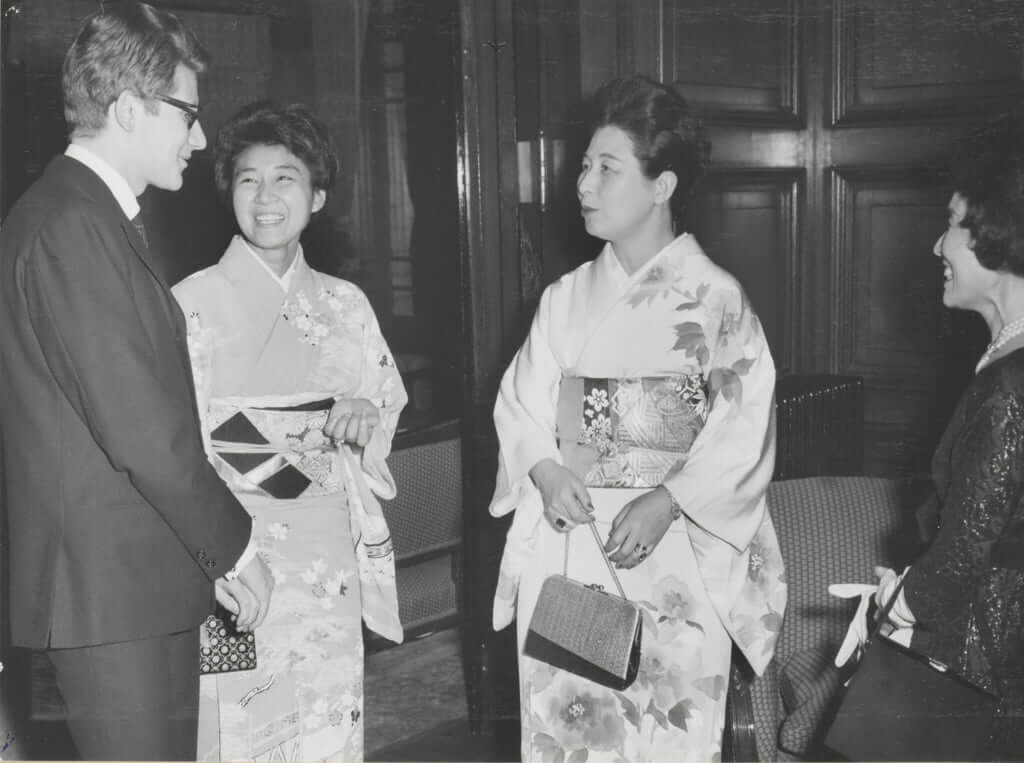
Reception in Korinkaku, Tokyo, 9 April 1963. © Rights reserved
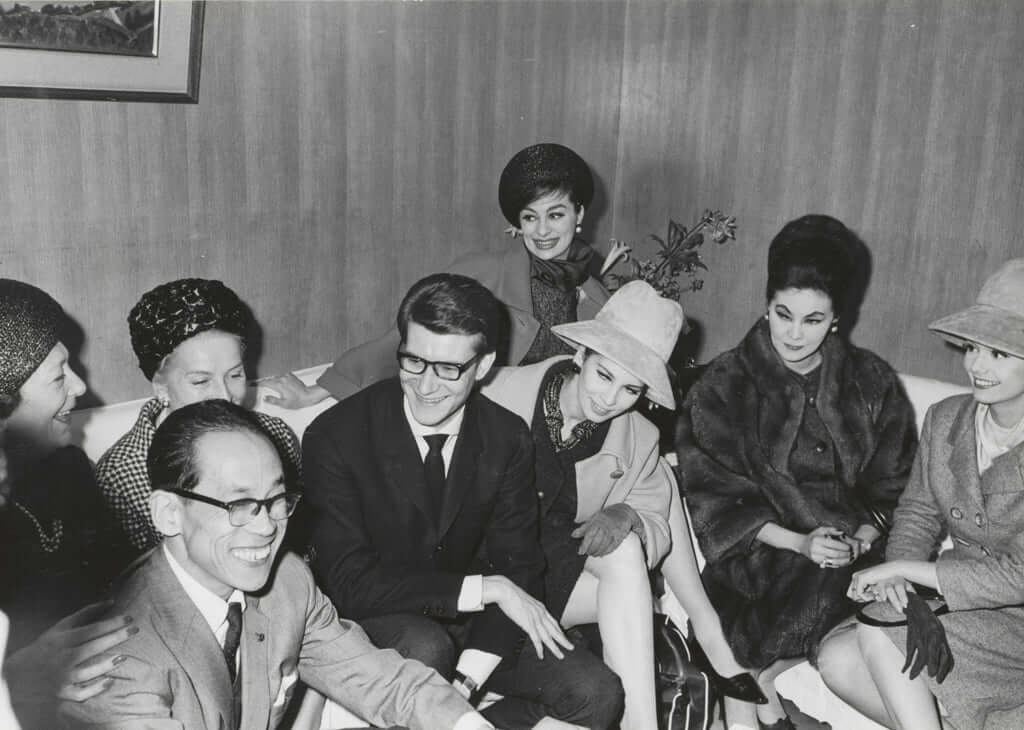
Arrival of the House of Yves Saint Laurent in Japan, Tokyo, 8 April 1963. © Rights reserved
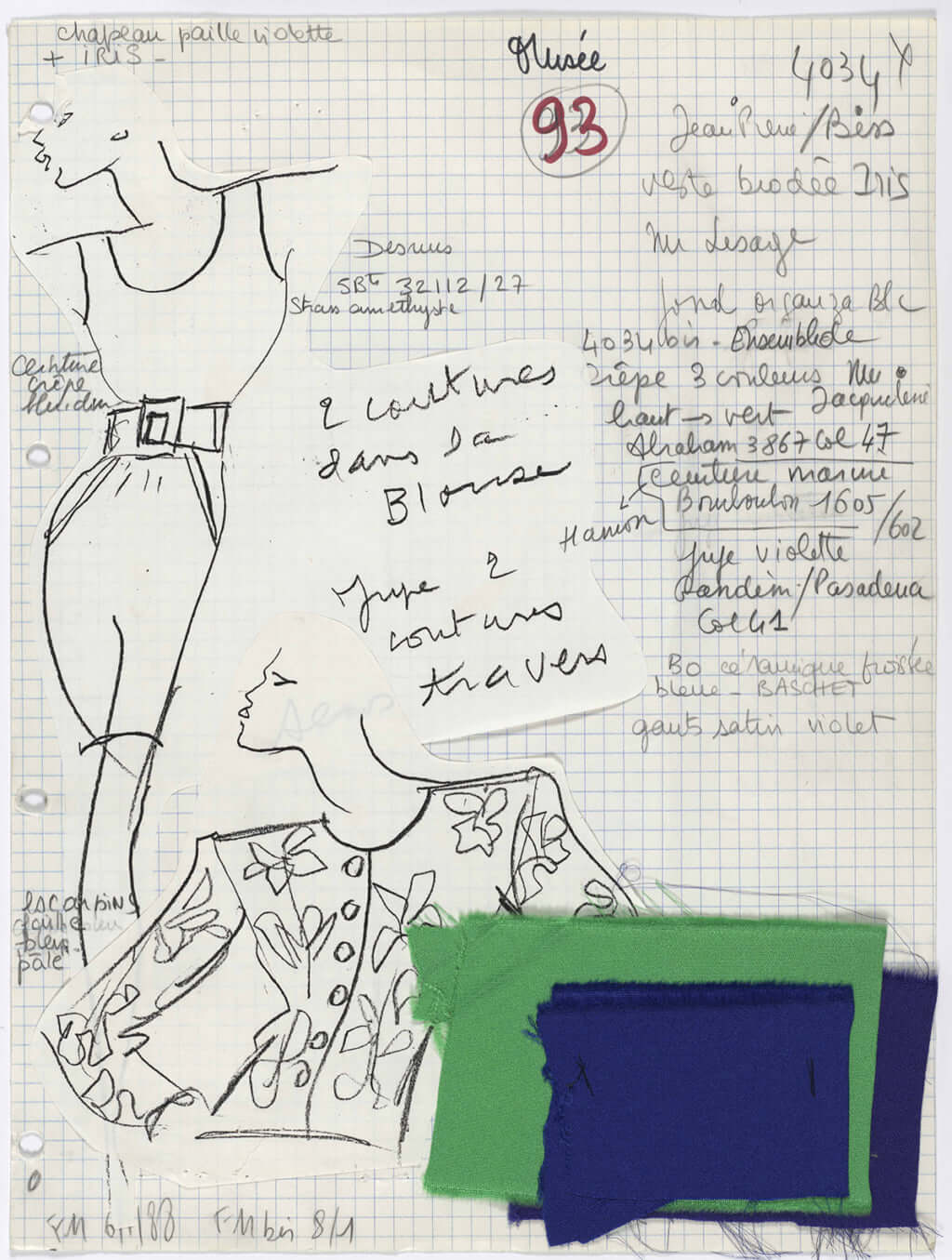
Studio specification sheet, or 'Bible page', for a short evening gown, homage to Vincent Van Gogh, spring/summer 1988 haute couture collection. © Yves Saint Laurent.
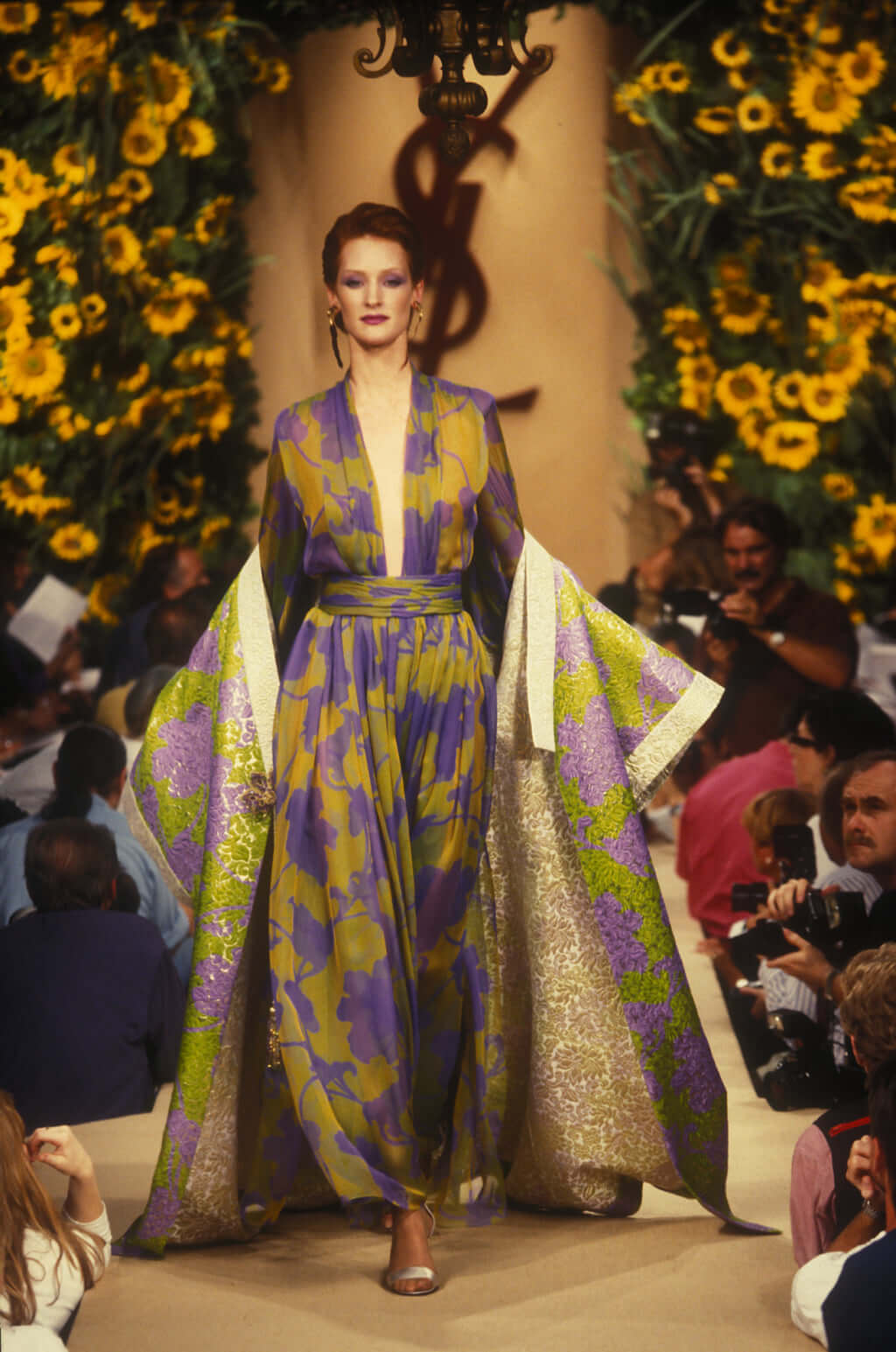
Evening ensemble worn by Valérie Jean during the fashion show for the autumn/winter 1994 haute couture collection, Salon Impérial of the Hôtel Inter-Continental, Paris, 20 July 1994. Photographed by Guy Marineau © Yves Saint Laurent / photo: Guy Marineau
TRENDING
-
A House from the Taisho Era Reveals Its Secrets
While visiting an abandoned building, Hamish Campbell discovered photographs the owner had taken of the place in the 1920s.

-
The Taboo-Breaking Erotica of Toshio Saeki
The master of the 1970s Japanese avant-garde reimagined his most iconic artworks for a limited box set with silkscreen artist Fumie Taniyama.

-
With Meisa Fujishiro, Tokyo's Nudes Stand Tall
In the series 'Sketches of Tokyo', the photographer revisits the genre by bringing it face to face with the capital's architecture.

-
Masahisa Fukase's Family Portraits
In his series ‘Family’, the photographer compiles surprising photos in which he questions death, the inescapable.

-
Hajime Sorayama's Futuristic Eroticism
The illustrator is the pioneer for a form of hyperrealism that combines sensuality and technology and depicts sexualised robots.





